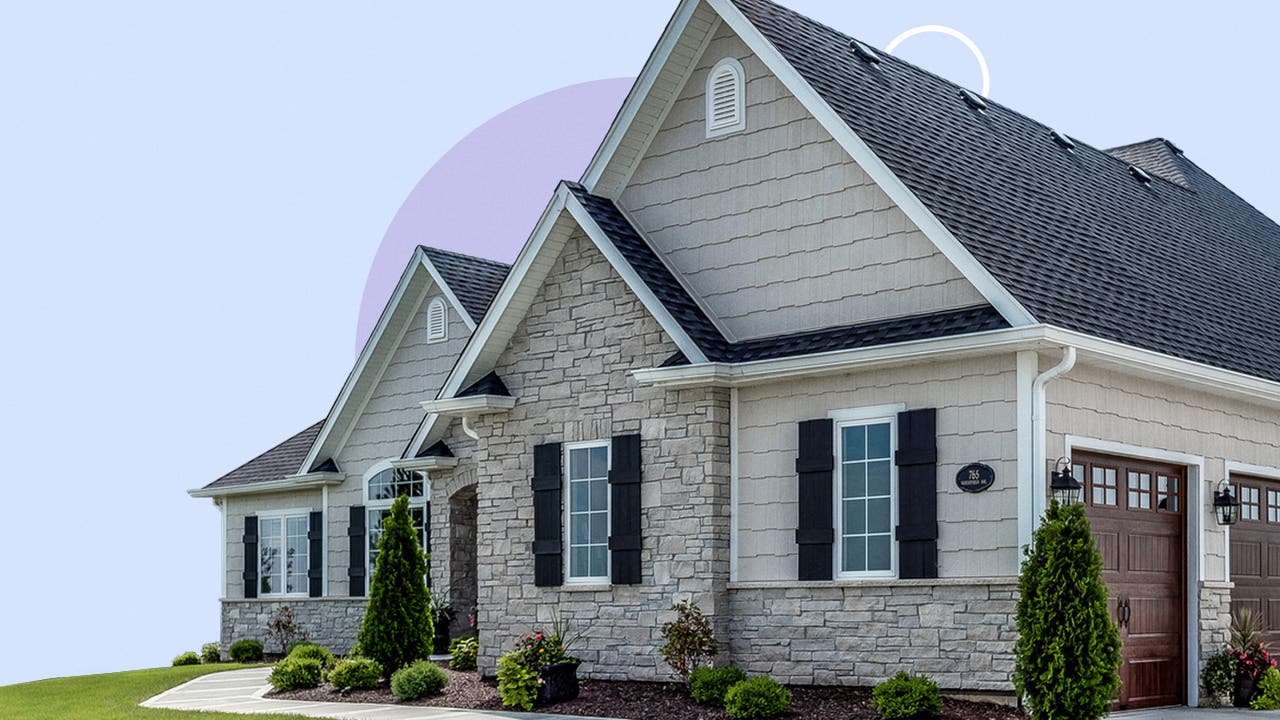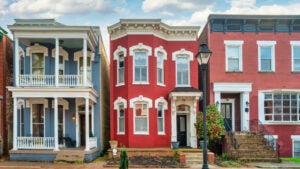Median home prices in every state

If you’re hoping to buy a house in the near future, your pathway to purchase will look quite different depending on where exactly you want to live. The definition of affordability isn’t identical across the entire country, so it’s important to think about where you can get the biggest bang for your buck. Here we break down the nationwide median home price by state, looking specifically at single-family residences.
How much does a house cost in the U.S.?
According to data from the National Association of Realtors, the median price for an existing home — one that’s already standing, not new construction — was $398,400 as of February 2025.
If you’re wondering whether you should buy a house now, or wait in the hopes that prices might come down significantly, you could be out of luck. February’s price tag marked the 20th straight month of year-over-year price jumps. The housing market tends to follow the law of supply and demand, and there simply isn’t enough supply to match demand, so home prices are looking fairly resilient.
Home prices generally rise over time, but they do fluctuate in the short-term. For example, seasonality plays a role: Prices will typically rise in spring, peak around June, then steadily drop during the fall and hit a low point mid-winter before the cycle starts again. In addition, prices can very quite widely from one geographic location to another, even within the same state or city.
Median home prices by state
To get a sense of how house prices vary by state, we combed through Redfin’s monthly housing market data as of February 2025 for a rundown of median sale prices for single-family residential properties.
| State | Median single-family home price |
| Source: Redfin, accessed April 8, 2025. | |
| Alabama | $282,400 |
| Alaska | $400,500 |
| Arizona | $470,200 |
| Arkansas | $255,300 |
| California | $866,100 |
| Colorado | $640,000 |
| Connecticut | $466,000 |
| Delaware | $396,100 |
| District of Columbia | $920,000 |
| Florida | $433,600 |
| Georgia | $374,700 |
| Hawaii | $975,500 |
| Idaho | $474,700 |
| Illinois | $285,600 |
| Indiana | $258,900 |
| Iowa | $230,600 |
| Kansas | $280,900 |
| Kentucky | $270,200 |
| Louisiana | $253,200 |
| Maine | $375,800 |
| Maryland | $496,500 |
| Massachusetts | $749,900 |
| Michigan | $249,300 |
| Minnesota | $370,900 |
| Mississippi | $255,100 |
| Missouri | $263,300 |
| Montana | $528,000 |
| Nebraska | $288,800 |
| Nevada | $496,000 |
| New Hampshire | $502,300 |
| New Jersey | $526,500 |
| New Mexico | $370,600 |
| New York | $576,100 |
| North Carolina | $380,300 |
| North Dakota | $350,000 |
| Ohio | $248,600 |
| Oklahoma | $245,900 |
| Oregon | $521,500 |
| Pennsylvania | $301,000 |
| Rhode Island | $484,800 |
| South Carolina | $403,600 |
| South Dakota | $325,700 |
| Tennessee | $389,100 |
| Texas | $339,500 |
| Utah | $588,500 |
| Vermont | $388,000 |
| Virginia | $457,500 |
| Washington | $658,700 |
| West Virginia | $258,800 |
| Wisconsin | $318,000 |
| Wyoming | $450,000 |
States with the most expensive homes
Hawaii: $975,500
From big-city energy in Honolulu to quiet-retreat vibes on Kauai, life in this state can make you feel like you’re always on vacation. However, it’s a pricey prospect: Chasing the aloha spirit full-time isn’t for anyone with limited savings. Plus, your mortgage payments aren’t the only expense that will be elevated here — utilities and food also tend to be more expensive on the islands than they are in the continental U.S.
Washington, D.C.: $920,000
While not technically a state, our nation’s capital does have some of the most expensive housing prices in the U.S. Buying a single-family home in D.C. feels like trying to buy in any other high-priced metro area, like San Francisco or New York City: prohibitively costly. If you’re on a budget here, you’re likely better off looking for a condo rather than a freestanding house. According to Redfin, the median sale price for a D.C. condo is a significantly lower $452,500.
California: $866,100
The cost of living in California is notoriously high, and housing costs are a big driver of those elevated expenses. Of course, you get what you pay for, and to many, a Pacific coast getaway or desert retreat is worth the price. Remember, though, that this state is massive, and while you probably won’t find a bargain in, say, Malibu, the California housing market has plenty of budget-friendly options too, particularly inland.
States with the most affordable homes
Iowa: $230,600
It’s the first state in election caucuses, and it’s also the first state on our list of the cheapest places to buy a home — a cause for celebration on both sides of the aisle. It’s not just farmland here, though. From the capital city of Des Moines to charming college towns like Iowa City and Ames, the Hawkeye State is a great spot to make your housing budget soar.
Oklahoma: $245,900
The heartland continues its affordable streak in Oklahoma, where home prices are considerably lower than its neighbor to the south, Texas. The Sooner State is an affordable option whether you want a bucolic farmhouse, a more urban vibe in Oklahoma City or a college-sports haven in Norman.
Ohio: $248,600
Speaking of midwestern college-sports havens, the home of the Ohio State University rounds out our top three. In fact, with Cincinnati down south, Cleveland up north and Columbus right in the middle, there are plenty of top-tier sports teams to go along with the great housing deals in the Buckeye State.
Can I afford to live in this state?
The prices listed here are medians — that means half of the homes in each state sold for more, and half sold for less. So just because you can’t afford to spend $975,500 on a house doesn’t mean you can’t afford to live anywhere in Hawaii: Fully half of the homes there sold for less than that. And these prices are for single-family homes; keep in mind that condos and apartments will have lower entry price points.
Real estate is a local game, and no matter what state you choose, be sure to look at individual towns and neighborhoods to figure out what works for your budget. If you love a particular city, you can often get more bang for your buck just outside of it. Explore state and local programs for first-time homebuyers and low-income buyers, too, which can help cover a down payment and closing costs for those who qualify.
Bankrate’s new-home calculator can help you figure out how much house you can afford. Another useful guideline that can help is the 28 percent rule: Many experts advise limiting your housing expenses to no more than 28 percent of your income. If you earn $7,000 per month, for example, that means keeping your total housing costs at $1,960 or less. And don’t forget to consider all the other factors that will impact your day-to-day cash flow, like commuting costs and utilities, as you compare different spots on the map.
Next steps
Whether you’re looking in the priciest states or you’re looking out for a bargain, there is one common ingredient: It’s smart to work with an experienced local real estate agent. Local agents are housing experts in their specific areas, and with today’s complicated housing market conditions, professional expertise is invaluable for any homebuyer.
FAQs
You may also like

Cost to buy a house in North Carolina

Cost to buy a house in California




